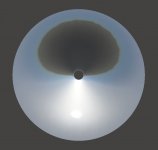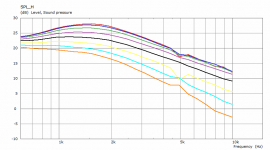In addition, the DH1A is much bigger than the CP380M, as well as the 1" exit drivers in the test.
The comparison makes little sense in this context.
The comparison makes little sense in this context.
Interesting 3eepoint!
The rectal guide was discussed earlier in this thread. Now it is also patented by Samsung Electronics.
I love these articles you find.
It looks like the designer has come up with some ring radiator innovations too:
*"Ring radiator loudspeakers consist of a phase plug in front of the diaphragm and are typically used to create omnidirectional sound. Potential resonances between the diaphragm and the phase plug create a design challenge and put additional requirements on the equalizer to obtain a flat amplitude response. We present a finite element model to predict and mitigate the undesirable peaks and dips in the amplitude response of ring radiator loudspeakers. Simulations show that a properly designed acoustic filter can minimize resonant behavior between diaphragm and phase plug. A maximum peak attenuation of 12 dB was obtained using this method. We observe good correlation between simulations and experimental results."*
Thanks.
Yours are at least as relevant and interesting.
I could post articles all day, but (should) try not to pollute other members' threads too much.
Yours are at least as relevant and interesting.
I could post articles all day, but (should) try not to pollute other members' threads too much.
Last edited:
You may be missing the point:... Not a CD to be found. ...
This is not about CDs per se but about the DI values desired in the design and why.... Yes the power output of CDs for home use is well over what one actually needs, but it surely doesn't hurt. But if one wants a high DI design with constant directivity then CDs are the way to go.
After all, why not ask Floyd Toole directly? He seems to be reachable on the forums these days.
See his post regarding a similar question: Horn Speakers - Is it me or....... | Page 7 | Audio Science Review (ASR) Forum
"In terms of sound quality, it seems that the constancy or smoothness of change in DI is more important than the DI itself. The dominant effect is spatial, not timbral. There is much discussion of this in forums, and personal preference is a factor. Stereo is so limited in its capabilities to convey spatial/enveloping sound that this is where it matters most. I use mutlichannel upmixing of stereo sources, so this factor fades to insignificance."
Last edited:
If the mouth is elliptical then it is different to what I have. Seems to me that left like that it always tends to narrow in the midrange. Maybe not so much in this case, it's hard to judge based on a photo.... As you see it is elliptical with a full OS contour all the way around. ...
What I tried with the last waveguide was to stretch the ellipse to a circle at the mouth again. Which lead to a slightly higher vertical beaming since the vertical profile is not OS anymore (it gradually diverges from that in a nonlinear manner) but the overall smoothnes of the polars is now excellent.
I also like the circular mouth better by purely aesthetics reasons.

Last edited:
BTW,
I still don't understand how can they claim that. They are crossing a 15" around 800 Hz and keep the DI about constant from that point - how can it be close to "cone and dome" speakers?Floyd Toole said:The M2 uses a 120 x 100 deg horn, which is close to the DI of cone and dome speakers (see Figure 10.15 in the 3rd edition of my book). ...
Last edited:
BTW,
I still don't understand how can they clam that. They are crossing a 15" around 800 Hz and keep the DI about constant from that point - how can it be close to a "cone and dome" speakers?
An externally hosted image should be here but it was not working when we last tested it.
Here's the directivity index for the JBL M2
An externally hosted image should be here but it was not working when we last tested it.
Here's the directivity index for the Revel Ultima Salon
Their measurements are surprisingly close, considering how different they are.
I've listened to JBL back-to-back with Revel, and if you put a blindfold on me it would be challenging to tell which is which. At very high SPLs, the JBL will exceed the Revel, but tonally they're surprisingly similar.
Patrick
Thanks, now it is clearer to me what is going on there. For the M2 the DI is really a bit lower (the flat part, around 7.5 dB) than, say, Earl's speakers (which have about 9 dB?) in exchange for it not being so gradual under 1 kHz. Would be interesting to see their woofer alone.
Still, it is higher than Revels, which is (surprisingly) not as even in the midrange as I would have thought. Thanks for those plots.
Thanks, now it is clearer to me what is going on there. For the M2 the DI is really a bit lower (the flat part, around 7.5 dB) than, say, Earl's speakers (which have about 9 dB?) in exchange for it not being so gradual under 1 kHz. Would be interesting to see their woofer alone.
Still, it is higher than Revels, which is (surprisingly) not as even in the midrange as I would have thought. Thanks for those plots.
I don't think I am missing the point, since I am the one who raised the point: "Toole would probably* also say that compression drivers and larger-than-standard-dome-tweeter-guide waveguides are absolutely unnecessary in home audio, in that they make no difference worth noting."You may be missing the point:
As you can see above, it is very much "about CDs per se", specifically, are they unnecessary in home audio. The answer appears to be yes, if Toole himself eschews them, and he publishes graphs showing similar DI progressions achievable from conventional speakers that are readily available.This is not about CDs per se but about the DI values desired in the design and why.
Last edited:
Patrick
Thanks, now it is clearer to me what is going on there. For the M2 the DI is really a bit lower (the flat part, around 7.5 dB) than, say, Earl's speakers (which have about 9 dB?) in exchange for it not being so gradual under 1 kHz. Would be interesting to see their woofer alone.
Still, it is higher than Revels, which is (surprisingly) not as even in the midrange as I would have thought. Thanks for those plots.
I overlayed the JBL M2 and the Revel Salon Ultima2 in one graph.
One thing I notice, is that the M2 has *significantly* narrower beamwidth in the midrange.
I wonder if this might be contributing to people's preference for the Salon?
IE, the M2 waveguide has a beamwidth of 120x100, which is quite wide. But the xover point is 700Hz, and the gap between the midbass and the waveguide is about one half of a wavelength. At that spacing, you're going to be stuck with a vertical beamwidth of about seventy degrees, at the most.
So I wonder if the pattern flip that's caused by the large distance between midbass and waveguide may be causing issues?
Some have said that they prefer the sound of the cheaper JBL monitors, and perhaps that preference is because they won't suffer from pattern flip as much, because the center-to-center spacing is much tighter.
Note that in the midrange of the JBL M2, there's a widening gap between the early reflections and the on-axis output, in the midrange. This is probably caused by the center-to-center gap at the xover point.
Attachments
Last edited:
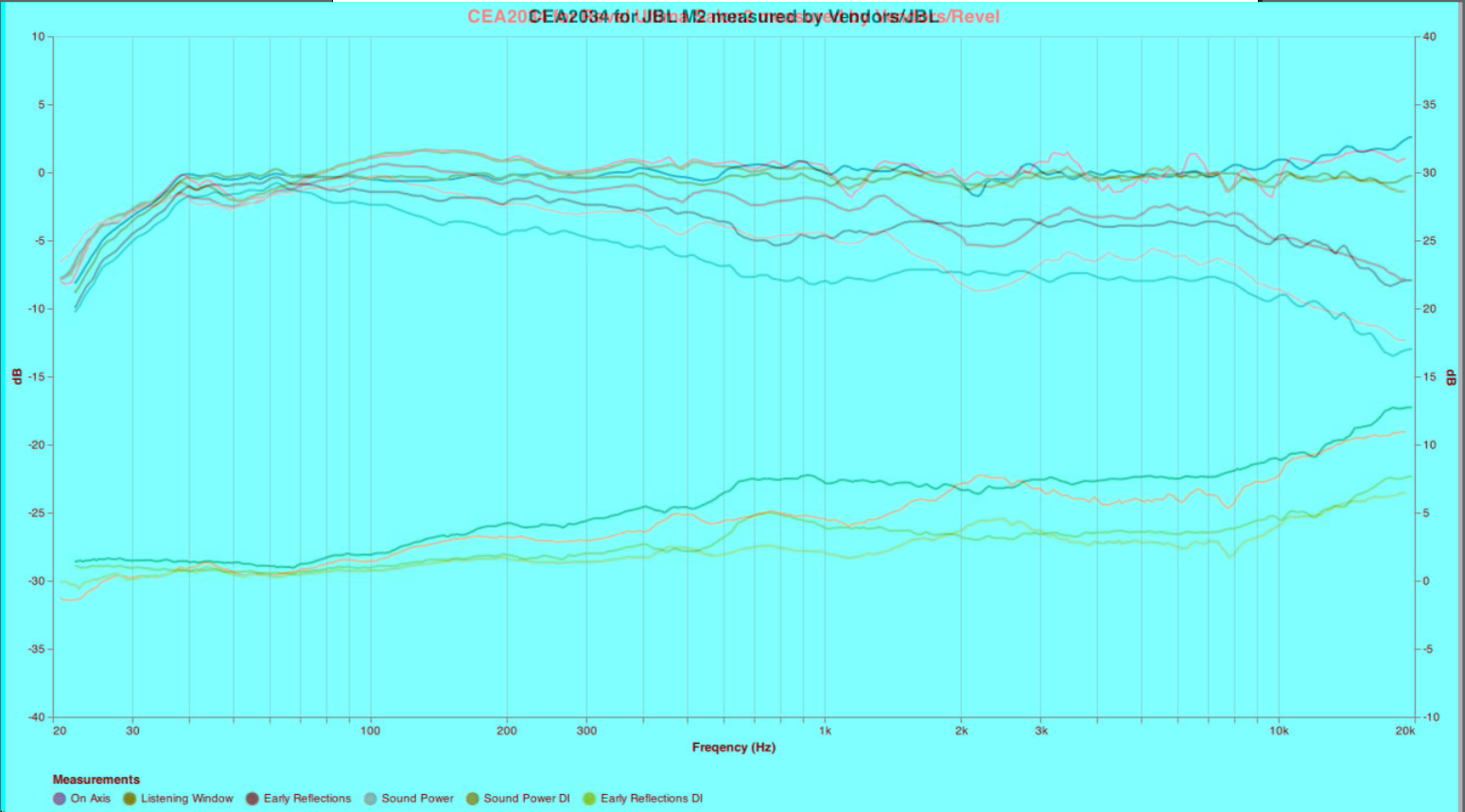
I overlayed the JBL M2 and the Revel Salon Ultima2 in one graph.
One thing I notice, is that the M2 has *significantly* narrower beamwidth in the midrange.
I wonder if this might be contributing to people's preference for the Salon?
IE, the M2 waveguide has a beamwidth of 120x100, which is quite wide. But the xover point is 700Hz, and the gap between the midbass and the waveguide is about one half of a wavelength. At that spacing, you're going to be stuck with a vertical beamwidth of about seventy degrees, at the most.
So I wonder if the pattern flip that's caused by the large distance between midbass and waveguide may be causing issues?
Some have said that they prefer the sound of the cheaper JBL monitors, and perhaps that preference is because they won't suffer from pattern flip as much, because the center-to-center spacing is much tighter.
Note that in the midrange of the JBL M2, there's a widening gap between the early reflections and the on-axis output, in the midrange. This is probably caused by the center-to-center gap at the xover point.
And it may have something to do with the membrane being 135g and playing midrange tones?!
Are you aware of the fact that two different masses fall with the same acceleration in a gravitational field? The force on them is different. The same holds for the membranes - different masses, different forces (different magnetic field strengths), same motion. That's not the problem.
I am blessed to know that now. I've been fooling myself all these years looking for a tweeter with small mms. and that changing direction and mass have nothing to do with the speaker.
The 2216ND looks like a really good woofer to me, full specifications here
2216Nd
The Klippel results show that it is a very well designed unit.
Just as an example the Acceleration equation above substituted with BL and MMS gives a value of 18.9/135 = 0.14 for the 2216ND, another woofer that has a lighter cone is the 15PR400 with 16.7/85.2 = 0.19, so more BL per gram for the 15PR400. I'm sure there are heavier coned drivers available that would show the result the other way round.
2216Nd
The Klippel results show that it is a very well designed unit.
Just as an example the Acceleration equation above substituted with BL and MMS gives a value of 18.9/135 = 0.14 for the 2216ND, another woofer that has a lighter cone is the 15PR400 with 16.7/85.2 = 0.19, so more BL per gram for the 15PR400. I'm sure there are heavier coned drivers available that would show the result the other way round.
OK, now back to earth. I've tried a pure OS made from the horizontal profile of the last waveguide shown and it's basically the same.
Hey, I've basically ended up with the OS waveguide!
The size and the mouth termination matter. That's all, folks.
Hey, I've basically ended up with the OS waveguide!

The size and the mouth termination matter. That's all, folks.
Attachments
- Home
- Loudspeakers
- Multi-Way
- Acoustic Horn Design – The Easy Way (Ath4)
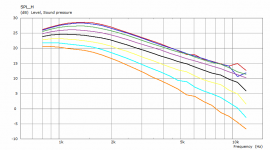
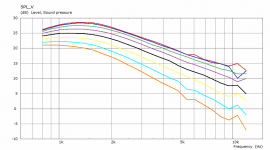
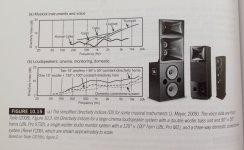
![2020-04-21 23_46_11-Xara Photo & Graphic Designer - [Untitled51 _].png](/community/data/attachments/769/769439-d9598eb84add328e191ed95b6eed269f.jpg?hash=2VmOuErdMo)
